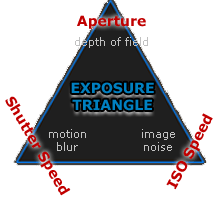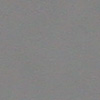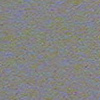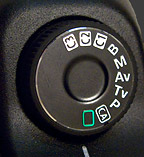Achieving the correct exposure is based upon that of the rate o flight is uncontrollable, three factors remain under your control:
1)the cameras(lens) width, 2)the duration you leave it in then(exposed to light),3)and the quantity of light you want to collect.
It is a necessity to make sure you collect the correct amount of light not underexposed but not overexposed levels. This is highly important due to the many different availabilities of width, time and quantity of light you wish to achieve.
For example,less amount go time in the light can work if you’re camera lens expands and is very wide.Alternatively for the same duration with a narrow lens can be used but you Will achieve less light.
EXPOSURE TRIANGLE: APERTURE, ISO & SHUTTER SPEED
Each setting controls exposure differently:
Aperture: controls the area over which light can enter your camera
Shutter speed: controls the duration of the exposure
ISO speed: controls the sensitivity of your camera’s sensor to a given amount of light
although one section is able to use as many different combinations to achieve s certain style and technique. The key, however, is knowing which trade-offs to make, since each setting also influences other image properties.













 Brett Weston - Brett Weston was an American photographer. His work gives the same sense of stillness and focuses on natural/man-made shapes and forms - the second photograph's stillness is broken with the man passing the through the frame. Weston's photos are simple and complex - with complex shapes and layers.
This first picture has a cluster of forms and rigid lines and demonstrates high contrasts between black and white. The last photograph has less in it - a simpler photo but also contains textures in the roof with its many ridges.
Brett Weston - Brett Weston was an American photographer. His work gives the same sense of stillness and focuses on natural/man-made shapes and forms - the second photograph's stillness is broken with the man passing the through the frame. Weston's photos are simple and complex - with complex shapes and layers.
This first picture has a cluster of forms and rigid lines and demonstrates high contrasts between black and white. The last photograph has less in it - a simpler photo but also contains textures in the roof with its many ridges.





 Best Photographs - I chose the simplest images because it helps to keep the focus on one point of the image. Each of these photographs are minimal which creates a sense of satisfaction. I chose to not have colour in the images so I could of focus on the tones in the image while still keeping the images basic and minimal.
Best Photographs - I chose the simplest images because it helps to keep the focus on one point of the image. Each of these photographs are minimal which creates a sense of satisfaction. I chose to not have colour in the images so I could of focus on the tones in the image while still keeping the images basic and minimal.



















 ph.
ph. ra.
ra. e three variables that determine the exposure of a photograph.
e three variables that determine the exposure of a photograph.











 What does ISO effect?
Noise
What does ISO effect?
Noise